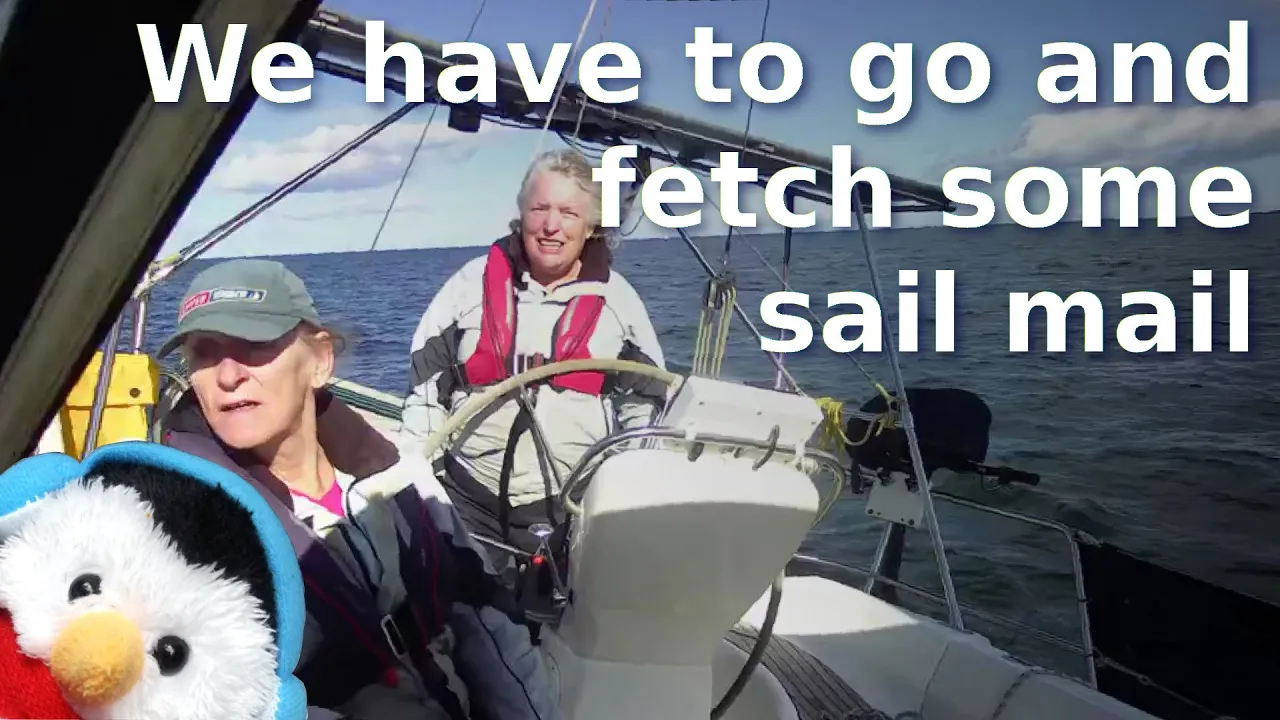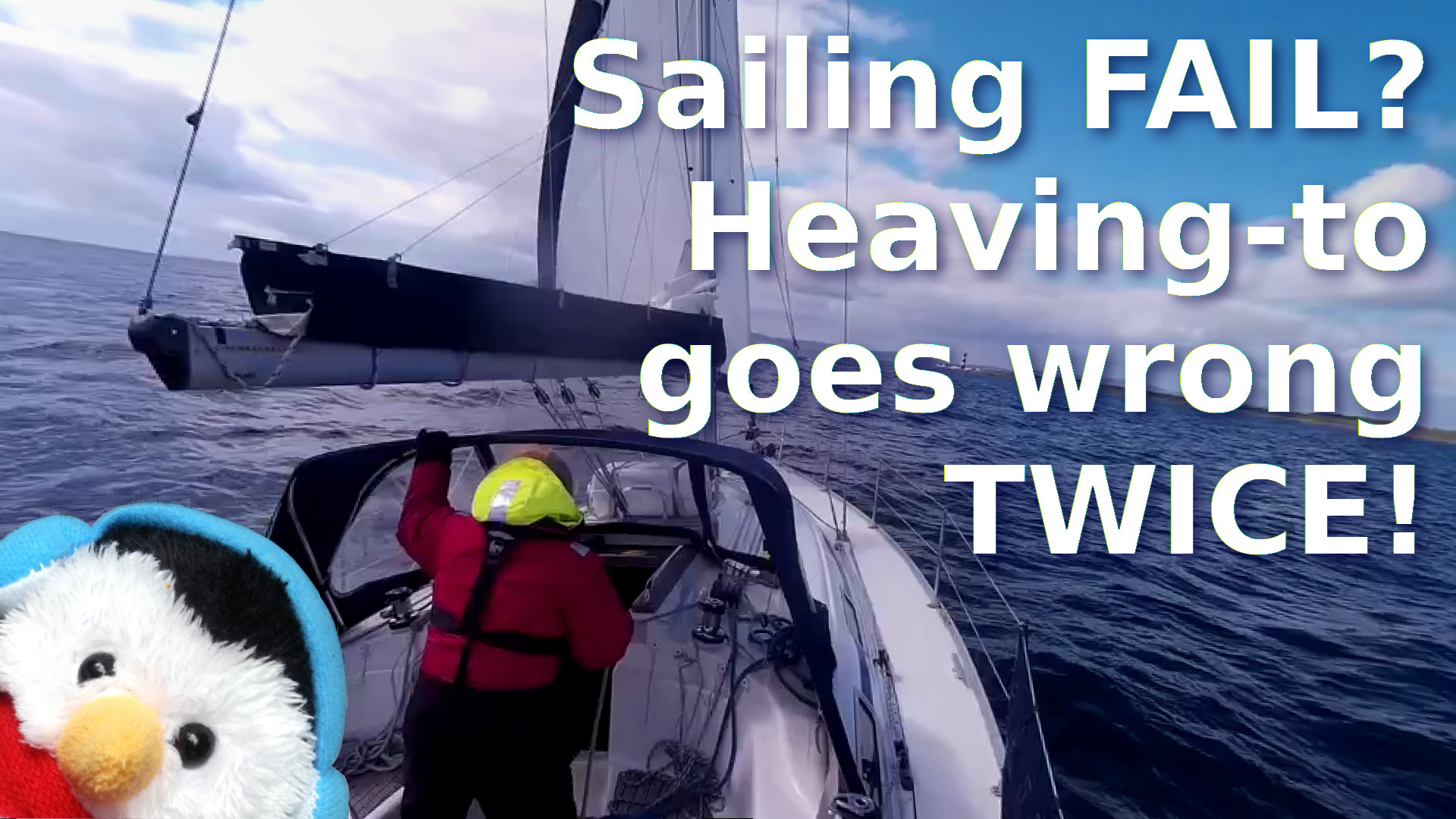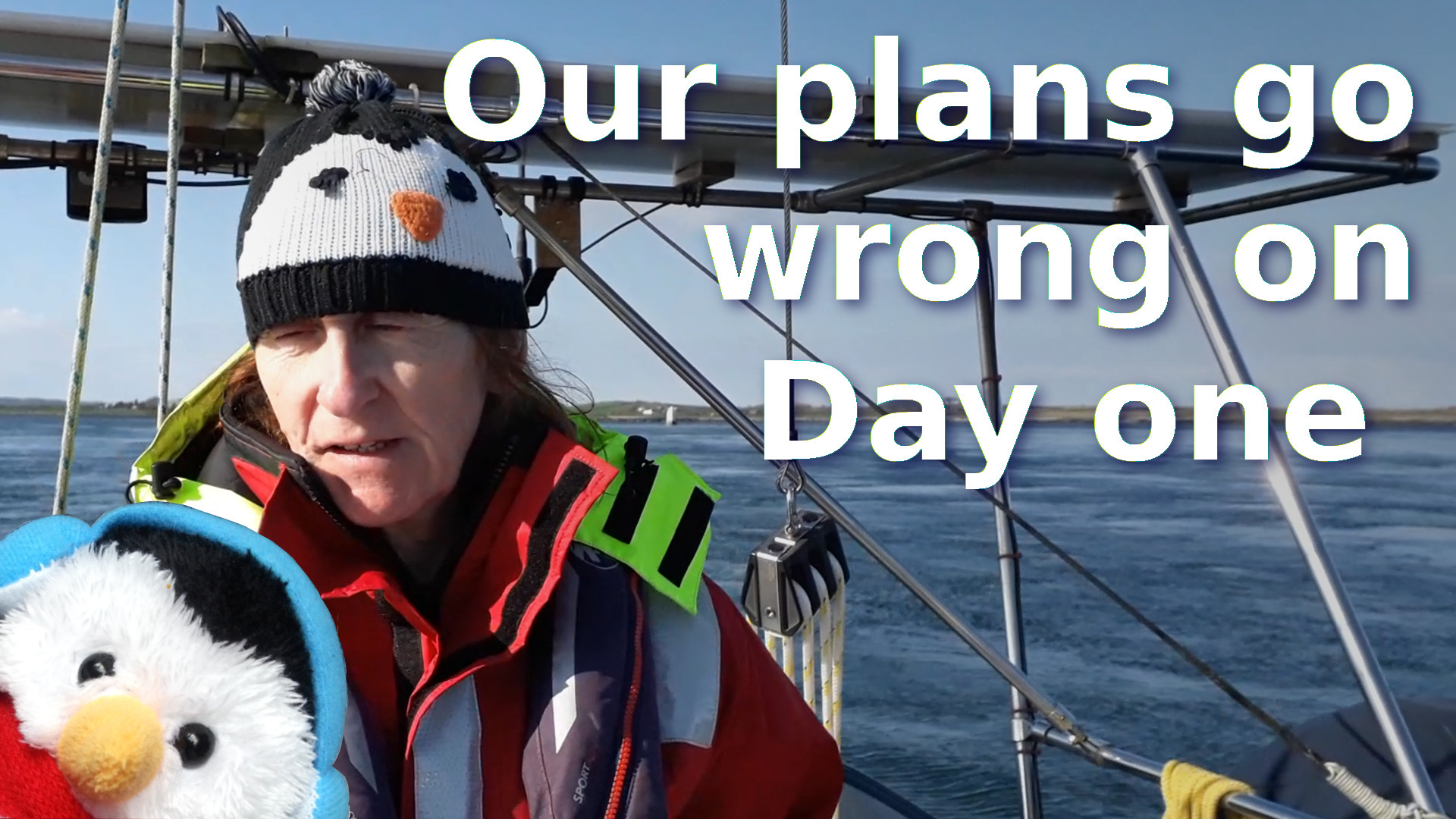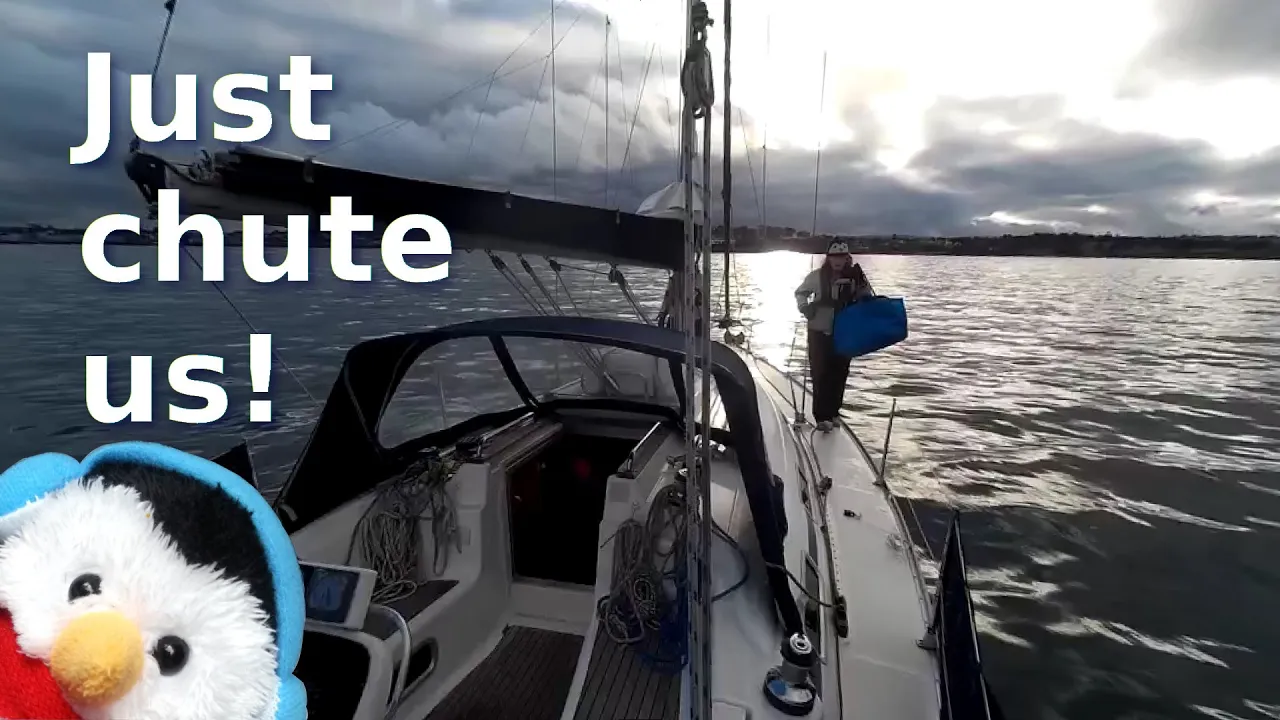At the moment in Bangor we have F10 and F9 storms coming through the night, with one night reaching F11. That was the first night that I did not get a good nights rest in over a year. Usually on Salty Lass, I sleep really well, it's getting up that is a problem. Even though the winds had died down to just a F7 Beverley decided to go out and film. The sea looked as calm as milk, the only thing that she managed to prove was how good our £10 mike system is.
The passage
- Planning - When you are planning a night time passage, try and plan so that you have the least to do at night. If there are any issues or tricky sections like departures or entrances try and plan these for the day time sections. Do not be afraid to have a tricky section at night, but if you can make your life easier, then do so. An example of this is when we went from Arklow to Caernarfon. We left is the daylight and the entrance into Caernarfon was also in the daylight. On top of that we made sure that we went through an overfall in the middle in the twilight, rather than in the dark.
- Night lights - During the night you want as few lights on as possible. You can either go for a red light, or a dim white light. We prefer the dim white light as we find that we can read easier in that light.
- Reef down your sails - Reef down at night. When you reef down you effectively go slower, so you will have more time to see issues and react to the problems.
- Watches - Organise a watch system so that people get a rest and a warm. For Beverley and I we tend to have two hour watches. That way the person on watch does not get too cold or board.
- Keep busy - While you are on watch, keep active, it is very easy for cold to set in, so keep yourself warm by moving about and having hot drinks.
Arriving in darkness
- Pots - When you are closer in, on top of buoyage you will also get crab pots and mooring balls so keep a good watch. As we arrive both of us will be out looking rather than just the one person.
- Torch - Have a good quality torch on board. These are good for scanning for pots and looking out for other things in the water. The torch we have is 600lumins and we nick name it head light on a stick because a car headlight is about 600lumins.
- Shadows - Look out for shadows, you might think that is impossible to see shadows in the dark but with night adapted eyes you can
- Binoculars - Have a set of binoculars aboard, the thing to look for in binoculars is the external diameter of the outside lens ours are 50mm, now compare that to the diameter of your eye and you can see that you will be getting a lot more light coming into your eye than without them, in fact 300times more light. We also use the 50mm lens so that we can lift them. If you are in the market for new binoculars get one with an internal compass that lights up at night
- Compass - Have a hand held compass with infinity prism. Ours has a luminous dial that can be charged up at night so that you can read it.
- Paper charts - On a paper chart the characteristics of the lights that you can see are right beside the light, while with electronic charts you have to touch the light to read its characteristics, example of light characteristics are:-
- FL.G. 15s11m3M - Flashing Green 15second period 11m high and can be seen for 3 miles
- 2F.R(vert)5M - 2 Flashing reds arranged vertically one above the other can be seen for 5miles
- Oc.10s39m18M - Occulting with a 10s period, 18m high which can be seen for 18miles
- 2F.R(vert) - 2 Flashing reds arranged vertically one above the other
- Issues with electronic charts - Always zoom in to see all the information, sometimes important information can be on the lower layers. Once you have seen all the information then come out so that you only have the information that you need. Also be aware that Cardinals are on a layer higher up than other lights, so for example the light at Kish bank is on a lower level than the cardinals
- Fl(2) 20s 29m21M - Flashes twice every 20s and can be seen for 21miles
- VQ - North cardinal very quick
- Q(6)+ - South Cardinal Quick 6 flashes + 1 long flash
- Strategy - Have a strategy for coming in. If you can give your deck crew as little work to do as possible so if you can go on a mooring ball rather than anchor then do so.
- Faulty lights - Sometimes lights are not lit, so always gear your passage on what you can see and avoid the unlit bouyage
- Leading lines - These can be a lot easier to see in the dark than the light, so coming into Port Patrick at night, we find it easier to see the leading line than when it is the day, this is also true of Carrickfergus and Larne lough
- Sectored lights - We find it easier to find the white from the red side rather than the green, the bleed of red to white is clearer than green to white.
- Locker lights - We have fitted locker lights so that we can see equipment such as ropes fenders etc at night. When you are coming in night vision is not as important so put deck lights on as well as locker lights if you have them
- Cockpit companion - If for some reason you do not know what a set of lights mean then you can use the cockpit companion to give yourself a quick refresh
The summary
- Planning - Have a plan for your passage and know what you are doing at the start, middle and end of your passage. Try and get the tricky bits, departures rip tides and entrances in the day light hours
- Crew - Make sure you have your crew prepared and have somewhere for them to sleep. Have lots of options for hot drinks and healthy snacks
- Boat - Make sure it has the right lights and reef down at night
- Equipment - Have good equipment on board, decent torch binoculars and an illuminated compass
- Clothes - Make sure the crew have decent clothes that will keep everyone warm at night.













